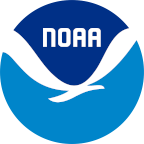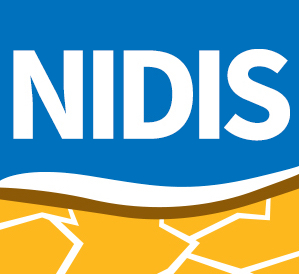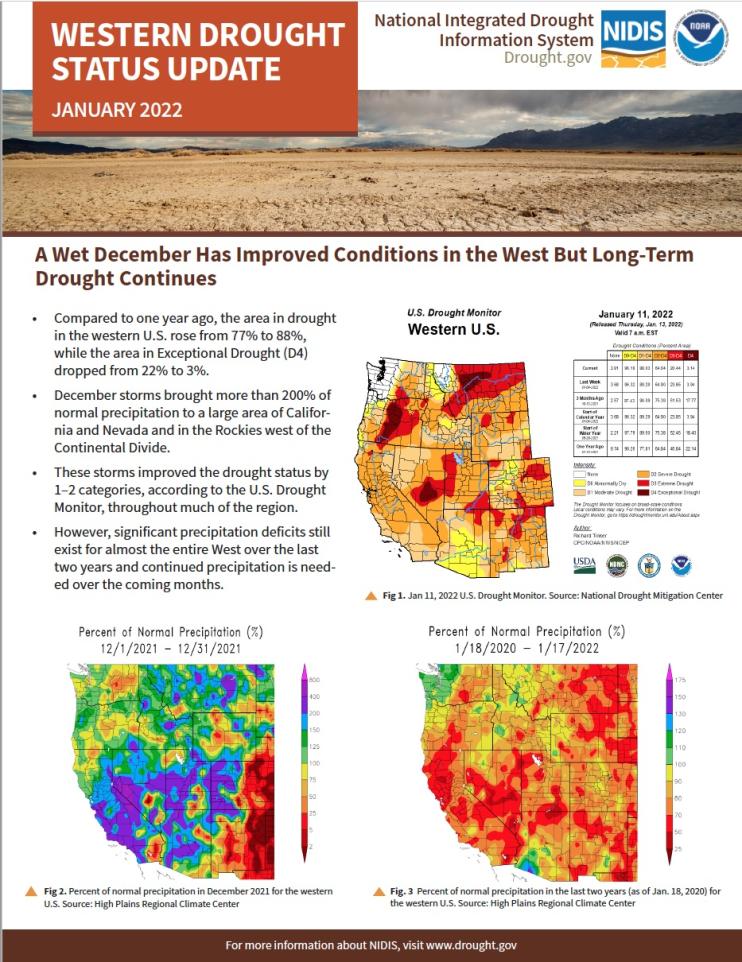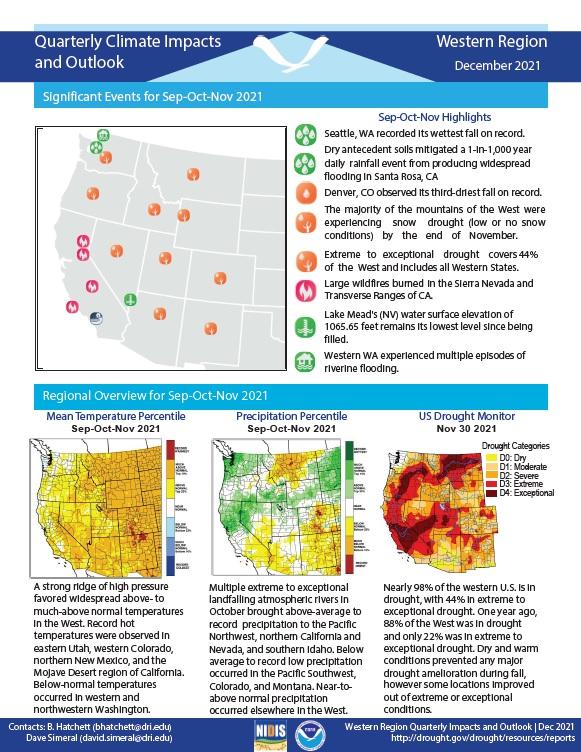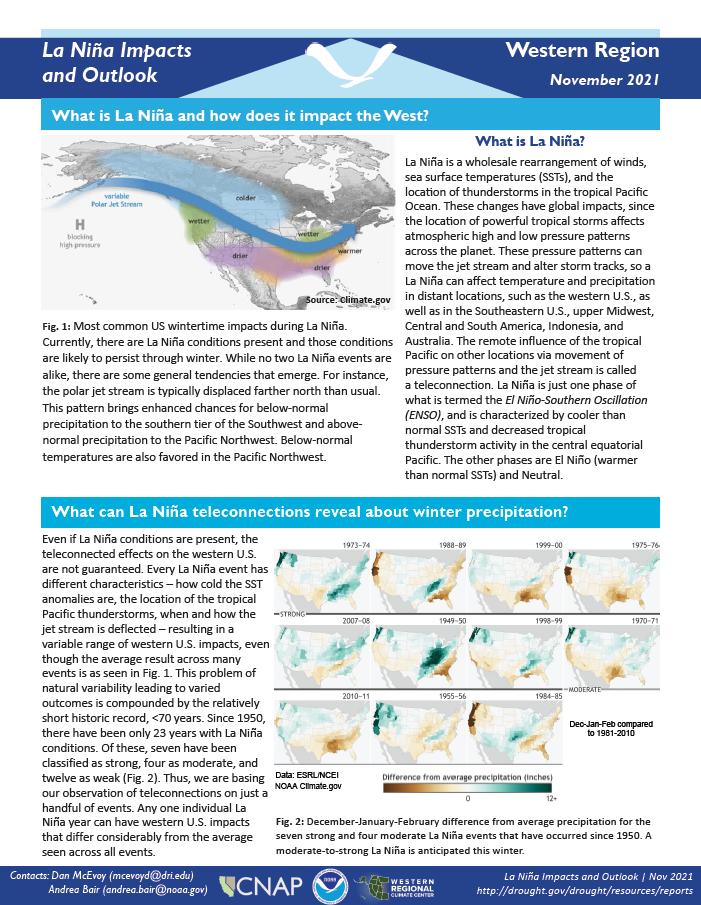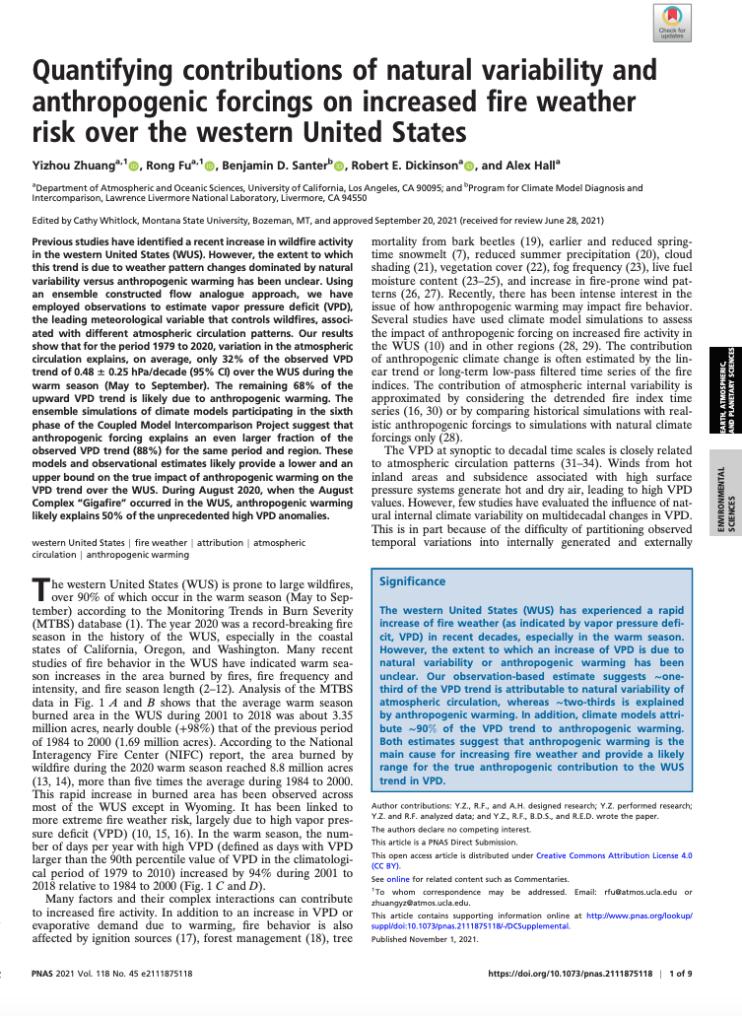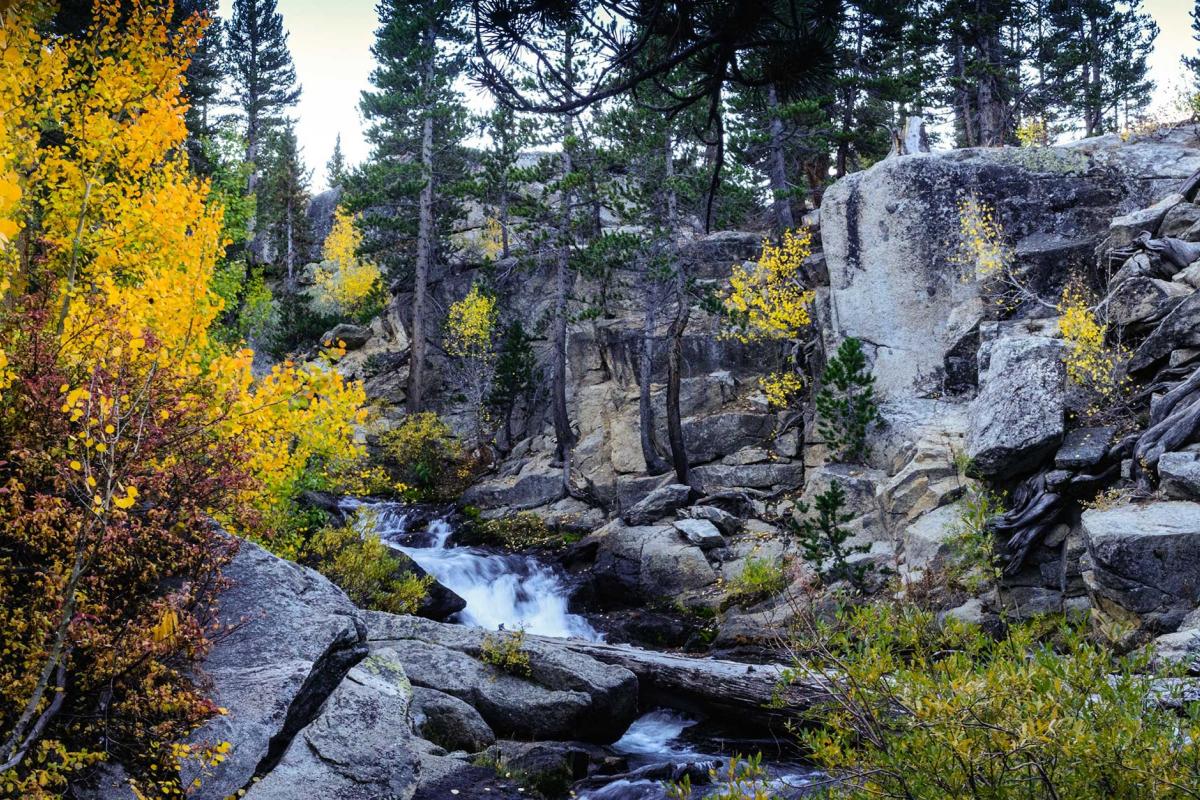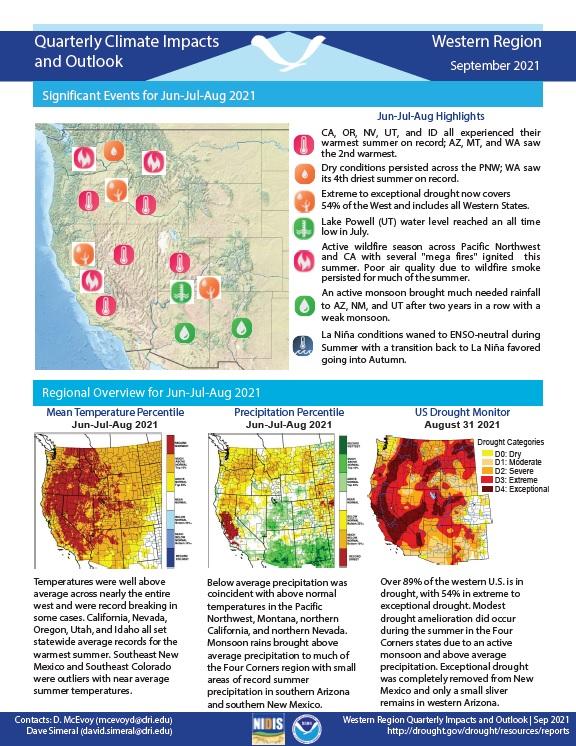For the latest forecasts and critical weather information, visit weather.gov.
Compared to one year ago, the area in drought in the western U.S. rose from 77% to 88%, while the area in Exceptional Drought (D4) dropped from 22% to 3%. December 2021 storms brought more than 200% of normal precipitation to a large area of California and Nevada and in the Rockies west of the Continental Divide. These storms improved the drought status by 1–2 categories, according to the U.S. Drought Monitor, throughout much of the region.
Quarterly Climate Impacts and Outlook for the Western Region for September - November 2021. Dated December 2021.
The National Weather Service Central Region developed 2021–2022 Winter Hazard Outlooks in coordination with NOAA's National Centers for Environmental Information and National Integrated Drought Information System (NIDIS); U.S. Department of Agriculture; High Plains Regional Climate Center; and National Interagency Fire Center's Geographic Area Coordination Centers. This outlook highlights the various Winter hazards that could occur and potential impacts across the Western U.S.
This summary provides information on the typical La Niña winter pattern; the La Niña outlook; potential impacts; and comparisons of conditions during previous La Niña years for the Western U.S., updated in November 2021.
NOAA’s Regional Climate Services Program created these outlooks to inform the public about climate impacts within their respective regions. Each regional report contains easy-to-understand language, and anyone can access them through the Drought Portal.
This article in the Proceedings of the National Academy of Sciences of the United States of America (PNAS) was the result of NIDIS-supported research. Learn more about this research.
Quarterly Climate Impacts and Outlook for the Western Region for June - August 2021. Dated September 2021.
Temperatures were well above average across nearly the entire west and were record breaking in some cases. Over 89% of the western U.S. is in drought, with 54% in extreme to exceptional drought.
